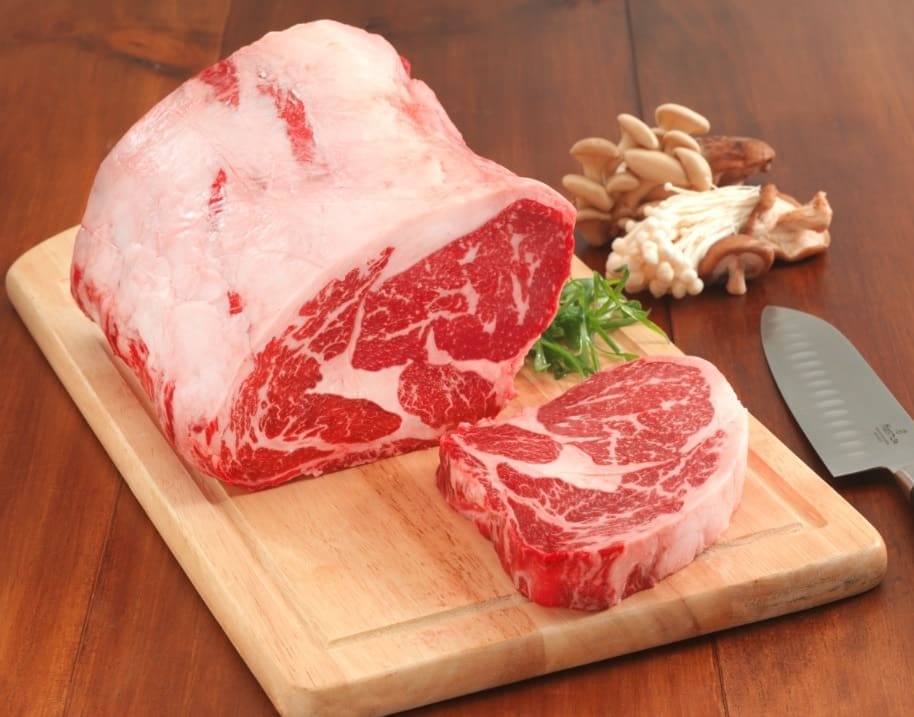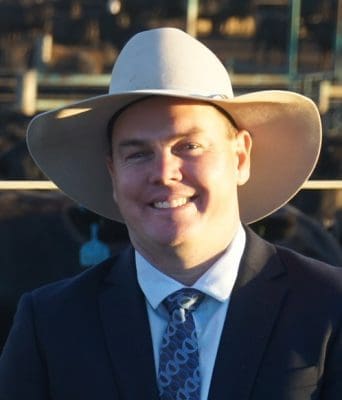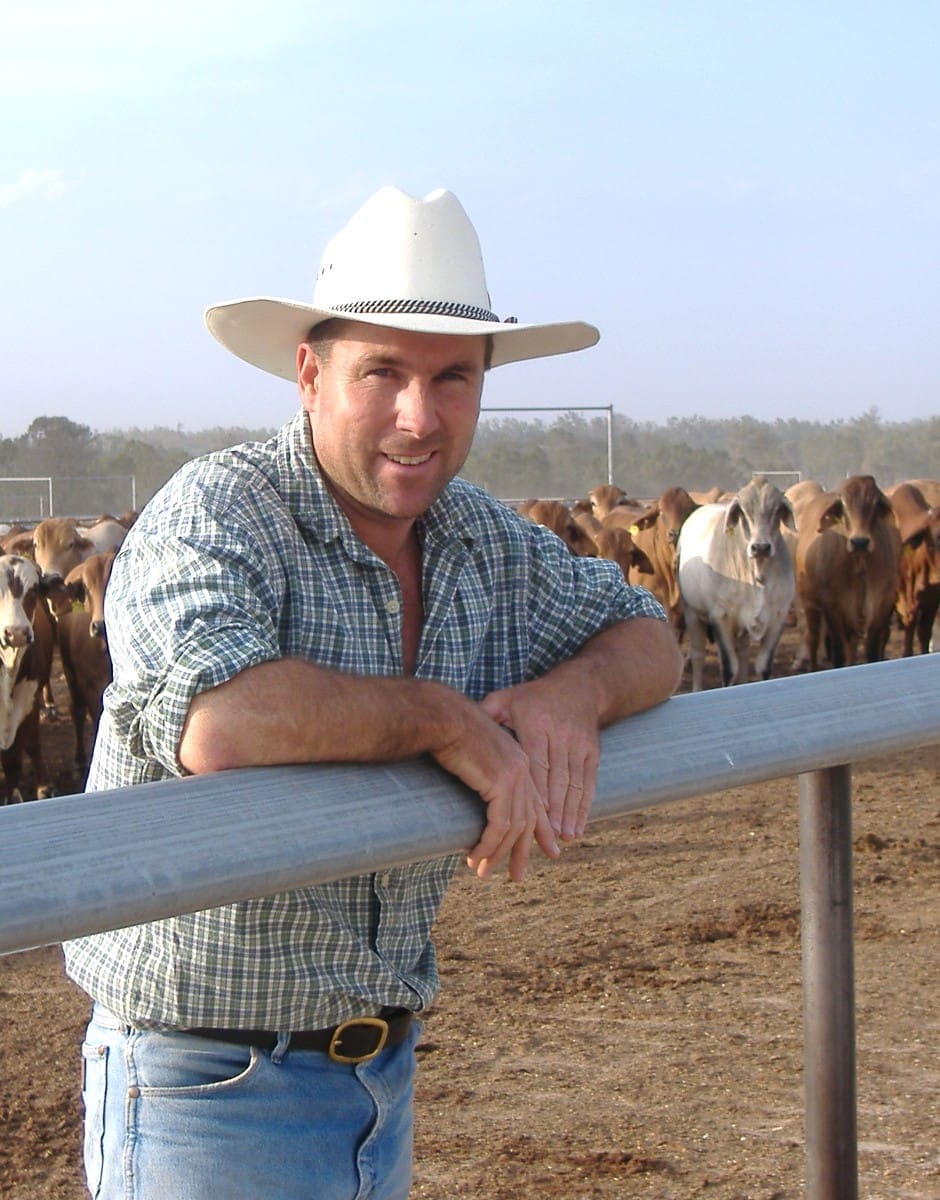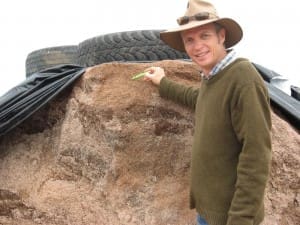
WHILE there is much rejoicing as grazing paddocks across large parts of eastern Australia turn various shades of green, the legacy of 18 months of punishing drought will reverberate on in sub-optimal feeder steer performance throughout 2020.
That’s the general view among a number of prominent feedlot nutritionists and feedyard operators spoken to by Beef Central in recent days, where we asked about the impacts they are seeing from the drought in feeder cattle in their current operations.
For this report we’ve asked stakeholders about a few main performance attributes – marbling, compensatory gain and its impact on rate of gain, and transition onto feedlot rations.
Marbling performance is primarily focussed on Angus and Wagyu types fed on for longer periods, to go into program brand business where IMF is a key part of the value proposition. The declines in marbling performance described below come against a backdrop of dramatic rises in feeder cattle prices since January.
So called ‘epi-genetic’ effects from the drought on cattle feeding performance was raised as a topic by levy payers attending November’s MLA annual general meeting in Tamworth.
It’s been well known in meat science circles for 20 years or more that compromised nutrition as calves – or even in-utero, before birth – can significantly impact marbling performance in cattle at later stages of their lives.
Marbling performance
The common view among stakeholders spoken to for this report is that drought has impacted average marbling performance among young cattle subjected to nutritional stress during last year’s drought.
One Queensland supply chain manager said among Wagyu cattle fed +400 days, the impact was being seen in more variability, and less high-performers in the marbling score 8-9 range.
A recent line of black feeders fed 130 days near West Wylong in NSW and processed at Kilcoy Global Foods in southern Queensland produced mostly marbling score 1’s with just a few 2’s – well below the vendor’s expectations.

Matt George
Feedlot nutritionist Dr Matt George, from Bovine Dynamics, said the drought impact on marbling performance had been in evidence in Angus and Wagyu cattle since about May last year.
“Don’t forget parts of the south have been very dry for several years, so the impact first started some time ago,” Dr George said.
“In most cases feeders haven’t been showing up emaciated in the feedyard, because they were mostly pre-fed in the paddock. But the damage had already been done.”
“We haven’t seen issues when it comes to average daily gains, or carcase weights at slaughter, nor in conversion rates. But we have seen them in changes in distribution of fat and marbling,” Dr George said.
“That tells us clearly that there have been epi-genetic changes in those cattle caused by drought.”
“Typically what we are seeing is changes in fat deposition – cattle with higher-than-normal kidney, pelvic and heart fat, and high P8 and subcutaneous fat, but lower marbling. That’s due to one thing: nutrient restriction early in the animal’s life.”
Asked how significant the marbling changes had been, Dr George said across big sets of data, suggested marbling was down ‘a good ten to fifteen percent’ on average, on both Angus and Wagyu F1/Fullblood cattle.
Some of that may have been confounded a little by high processing plant throughput due to drought pressure (therefore chilling time may have been fractionally reduced, impacting expression of marbling at grading). “But that does not negate the fact that there have been position-shifts in marbling performance overall,” he said.
Given that the industry is still feeding calves impacted by last year’s drought, and will continue to do so for some time, it was reasonable to say that the drought effects on marbling would not change any time soon, Dr George said.
“It will depend somewhat on where the feeder cattle come from, and the individual management systems being used,” he said.
Some producers had thrown a lot of money at nutritional support for pregnant females and calves last year, so there would be variability in terms of the impact of the drought on particular mobs.
“It goes back as far as the second trimester of the calf in the womb, and the first 150 to 200 days of its life, post-calving,” Dr George said.
Variability big factor
Darling Downs lotfeeder Steve Martin, general manager of Stockyard’s Kerwee feedlot near Jondaryan, said while his yard’s marbling performance over the past six months had been compromised due to the drought effect, it depended on time-on-feed and the base-quality of the animals involved.

Steven Martin
“The biggest challenge is greater variability in marbling, which is costly in a high-quality grainfed system like ours,” he said.
“There have been some early weaning practices that have been carried out well during the drought that could potentially improve the net marbling outcomes of high-content Wagyu cattle. After all, the Japanese domestic Wagyu system is based around weaning those calves at one week of age, so well-executed early weaning may actually improve marbling.
“But we have seen a drop in performance across all supply bases and quality ranges over the past year. The calves are putting fat cells in the muscle as it grows, and if they are significantly compromised due to drought, they just won’t marble when they get to the feedlot. Give them extra energy via a feedlot ration, and they deposit it under the skin, rather than in the muscle itself,” Mr Martin said.
In Kerwee’s case, marbling scores were probably a full marbling score lower than they would otherwise be for Wagyu types, and at least a half a marbling score on Angus cattle.
“We’re now buying cattle that were compromised in-utero, rather an after they were born. Those cows last year were in drought, and the impact on the calf’s feedlot performance is compromised. The fat tissues are programmed while the calf is in utero,” he said.
“It’s irreversible quality damage, and delivers greater variability, and the cattle we are boing now will be marketed in 2021, so the effect lingers on.”
Even the yard’s highest-performing and most consistent animals had seen a drop in performance, Mr Martin said.
“There’s still good ones among them, but more variability also. We’re hoping performance might get back on track by summer next year,” he said.
Breeder impact
Foreseeably, there would also be future impact on the cow herd, because of drought nutrition setbacks, Matt George said.
“Heifers now being retained for breeding, theoretically may not be as good as their genetics suggest,” Dr George said. “That’s because their lifetime capacity potential may be compromised. The same effect that’s seen on marbling performance in feeder cattle subjected to drought may be seen in diminished reproductive performance in the heifers retained for breeding.
“There’s lifetime negative longtitudinal issues in those cattle – despite the fact that technically they have the DNA to do it, because the expression of that DNA has now been compromised.”
In effect, the national beef herd has never been younger in terms of its age profile, after two years of drought-forced culling, but the fact remained that some of those young breeders may under-perform.
“It may be hard to measure, but certainly dairy industry data strongly supports the prospect of that happening,” Dr George said.
Kerwee’s Steve Martin agreed that the drought hangover would last several years among breeders.
“The herd rebuild that’s now occurring is going to include smaller, poorer, plainer, less-selected heifers that are retained just to produce a calf,” Mr Martin said.
“The national cow herd today is arguably the best it has ever been, on average, based on genetic improvement and heavy selection pressure due to drought. But from here forward, there will be compromised selection pressure, and anything that is able to calve will be used to produce a calf.”
Compensatory gain

Ben Maher
Darling Downs lotfeeder Ben Maher, who operates the B Feeders custom feedyard near Warwick, says he has seen a lot of compensatory gain in drought-impacted feeders over the past 12 months.
“Most feedlots would have done reasonably well last year, because of it,” he said.
“That extra compensatory gain was pretty much guaranteeing some good returns. You could do your sums on an average 2kg/day rate of gain, but end up getting 2.2kg/day – an extra 10pc gain at no extra cost,” Mr Maher said.
Another large Dalby district feedlot operator attending Friday’s HTW property breakfast in Brisbane told Beef Central they had seen exactly the same compensatory gain advantage, rising from 2kg to 2.2kg/day.
With the dramatic turnaround in seasonal conditions since January, the benefit of any compensatory gain would now shift to the breeder – adding weight to young cattle on new feed – rather than being passed on the lotfeeder.
Nutritionist Matt George said while the compensatory gain effect would continue in young cattle well into 2020, the question was whether that bonus was now picked up on grass, rather than in the feedlot as it was during the depths of drought last year.
“If you look back to the last big autumn break that happened back in 2011, most of the compensatory gain that year was picked up by the pastoral sector, well before feedlot entry,” he said.
“Last year, the feedlots got the lot, but I suspect that this year, most producers are going to try to bank that compensatory gain effect at home, before they sell.”
“Certainly there were lines of cattle last year that produced extreme compensatory gain, but by and large, most cattle were not presented in emaciated condition, due to the amount of supplementary feeding and nutrition support,” Dr George said.
Transition onto feed
With the amount of paddock and supplementary feeding occurring last year, a point raised by southern Darling Downs feedlot operator Ben Maher was how well many young cattle had transitioned onto feedlot rations.
“A lot of young cattle last year either had access to hay or some form of grain mix, fed in a trough. Even though they were drought-affected, we certainly found those young cattle started quicker on feedlot ration.
“Some drought cattle still took a while to fill up, but at least they knew how to eat out of a trough,” Mr Maher said. “I can only put that down to education to bunk feeding during the drought. Most of the feeder cattle out of the New England and northern NSW all had some supplementary feed, but it also applied to western cattle, that traditionally would not receive any supplementary support.”
“They know straight away what the bunk was for and what the water trough was for, and away they go.”

Dr Rob Lawrence.
Nutritionist Rob Lawrence from Integrated Animal Production said the key to how quickly young cattle went onto feed was the overall benefit to the group.
“There’s always the lead in any mob that goes onto feed quickly, but there’s often some stragglers. If the overall time spent transitioning those slow-starters is improved, it lifts the overall average performance,” he said
“Individual groups may not show much difference, but the reduced number of tail-enders will be where the benefit lies,” he said.
Dr Lawrence felt that the extent of supplementary feeding of both breeders and young animals that took place last year may help take the edge off the extent of the drought impact on marbling and other feedlot performance measures.
“There was an extreme level of nutritional support last year, which we think will help moderate any impacts on feedlot performance,” he said.
“Those cattle that were not given supplementary support have already gone through the system – either to the meatworks or backgrounders. One of the developments that did occur during last year’s drought was the emergence of a much more distinct backgrounding role in the grainfed supply chain – more like the system that’s seen in the US,” he said.
“Some of the bigger grainfed supply chains made arrangements for tens of thousands of young cattle to go through dedicated backgrounding programs to bring them up to feedlot entry weight – certainly on a scale we haven’t seen before.”
Dr Lawrence said breeders of marbling-oriented cattle, particularly, had worked hard last year to maintain body condition on pregnant females, and provide nutritional support for young weaned calves, to try to minimise any later marbling impact.
“Creep feeding was huge last year, and one large stockfeed manufacturer I spoke to said his business had never seen such volumes of early weaner and calf feed sold.”

The other factor that has a significant influence on grading performance is effective refrigeration at the process plant. Over the last 18 months we have seen inconsistencies in chiller operation and performance across a number of plants. This part of the puzzle should not be overlooked and in my experience is the one area that can be corrected. In terms of the refrigeration system, the evaporator (refrigeration unit), fans (air flow) and temperature profiles must be working at a level that are often not fully understood or achieved.